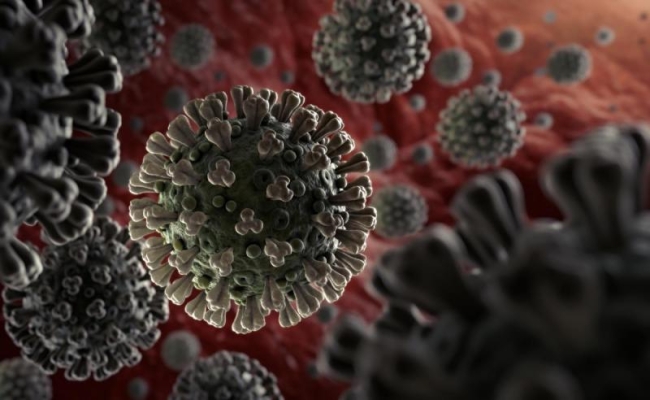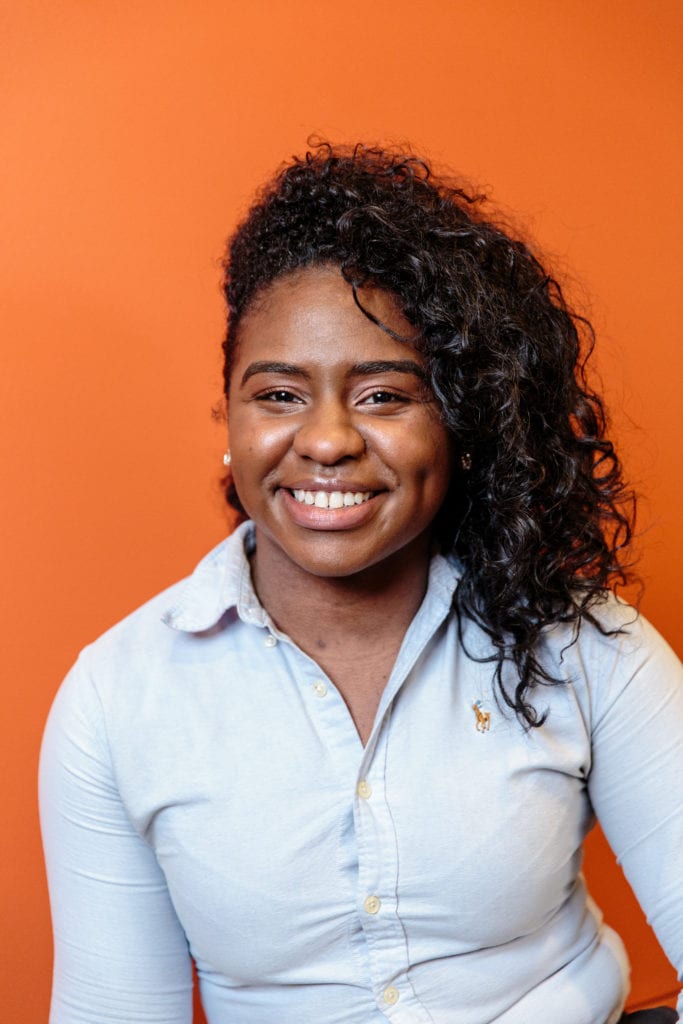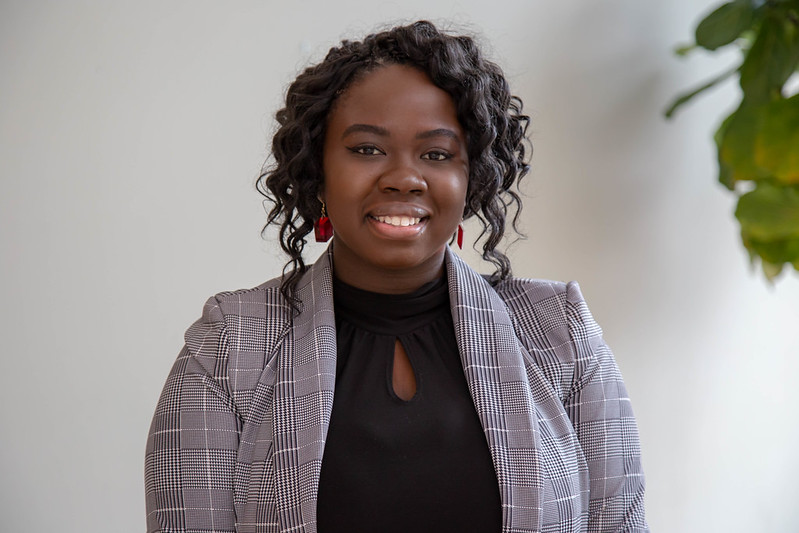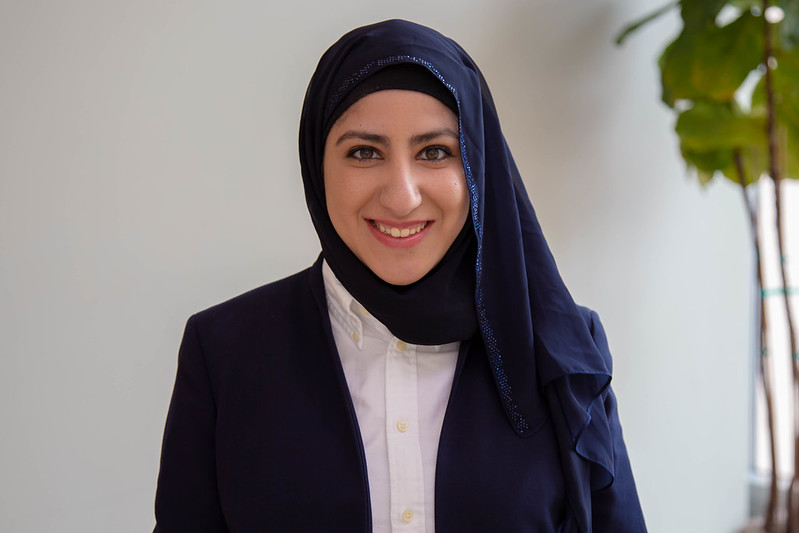You have /5 articles left.
Sign up for a free account or log in.

ISTOCK.COM/FPM
This is it, our final goodbye.
Thanks again for your readership and kind notes.
We'll get right to the news today, but please stick around for an important Q&A at the end. I spoke with a policy analyst from Education Trust, as well as two students from the California State Student Association, about how COVID-19 has affected students of color and how the current protests against racism are impacting black students and other students of color.
To the news.
Kery Murakami has the details on the divide between Democrat and Republican lawmakers over whether to grant liability protections to colleges or students.
Syracuse University is planning to test its sewage water for coronavirus particles, Paul Fain reports.
California Lutheran University has decided to grant credit to all students who take an Advanced Placement test, regardless of their scores, in light of the disruption caused by COVID-19, Scott Jaschik reports.
As nationwide protests continue, students are calling on colleges to cut their ties with local police, Emma Whitford and Lilah Burke report.
Incoming or current college students who have used racist speech on social media are now facing repercussions from colleges, Greta Anderson reports.
Colleen Flaherty has a story on #BlackBirdersWeek, a movement to disrupt stereotypes about who belongs in nature.
News From Elsewhere
Education Dive reports on the latest outlook for the race to recruit college students.
WBUR in Boston looked at how Massachusetts colleges are preparing to take on infected students.
The Chronicle of Higher Education looks at how faculty can teach in a trauma-informed manner.
Percolating Thoughts
This is a time when everyone has an opinion. As journalists, we try not to have opinions, but we've gathered some interesting ones from others.
The dean of libraries at Clemson University wrote about how academic libraries could be forever changed as a result of the pandemic.
A first-generation college student and journalist who has been a contributor to Open Campus wrote about the distance between herself and her parents now that she is a college graduate.
A history professor at the New School for Social Research argues in The New York Times that COVID-19 has made the best case so far for free higher education.


 Here is our last Q&A, edited for length and clarity. I spoke with Satra Taylor, a higher education policy analyst for the Education Trust, a D.C. think tank focused on improving equity for students of color and low-income students. Two students also joined our conversation -- Zahraa Khuraibet, an entering graduate student at California State University, Northridge, and the newly elected president for the Cal State Students Association, and Wonuola Olagunju, who will graduate from California State University, Stanislaus, in the fall. Olagunju has served as the vice president of university affairs for CSSA and was president of her university's Black Student Union. We discussed how the coronavirus pandemic is affecting students of color, as well as how the current unrest spurred by racial violence is affecting black students.
Here is our last Q&A, edited for length and clarity. I spoke with Satra Taylor, a higher education policy analyst for the Education Trust, a D.C. think tank focused on improving equity for students of color and low-income students. Two students also joined our conversation -- Zahraa Khuraibet, an entering graduate student at California State University, Northridge, and the newly elected president for the Cal State Students Association, and Wonuola Olagunju, who will graduate from California State University, Stanislaus, in the fall. Olagunju has served as the vice president of university affairs for CSSA and was president of her university's Black Student Union. We discussed how the coronavirus pandemic is affecting students of color, as well as how the current unrest spurred by racial violence is affecting black students.
Q: We know that people of color, especially black people, are being disproportionately affected by the pandemic. How do you see that playing out for college students?
Olagunju: The first thing to note is that a lot of students, especially those of color, have been affected in ways that I would say their counterparts have not. They have to come home, take care of family members; they've been having to give up space, to give up time. I have friends who are looking for jobs, because they need a job in the midst of all of this to provide for their families.
Students have been displaced or told to go back home. I used to be a resident assistant on campus this past year. We had a lot of students, when everything first started, whose first question was, "Can I stay? Because I don’t want to go home." Because going home means that I have to go back to whatever that might be -- that harm, that pain that they may have. By the time I finished up the year, we still had 100-plus students.
I do know and I see the pain of my fellow students, being a part of and a former president of the Black Student Union. We’ll have online meetings where we’ll just talk with each other, vent out our feelings. It's students crying over Zoom, talking about how they don’t know if they'll get through this and they don’t know if all of this is worth it. "Should I take a year off? Should I take a semester off?" Those types of things I hear on a daily basis.
We come together to unify and just hear each other out, give each other support wherever we can, because I think that’s the most some of us can do right now for others.
Taylor: COVID-19 is a global pandemic, but communities of color are disproportionately contracting and dying from COVID-19. That means students of color will face greater challenges and barriers on the path to starting and returning to college.
Students of color are more likely than white students to have a family member who has died of COVID-19. Students of color are more likely to be in a household with one or more of the 40 million people who are now on unemployment.
It’s a question of whether colleges can provide safe and supportive spaces, which is particularly relevant for students of color, who are battling two public health crises. One is COVID-19, but the other is racism during this time. Already there are indications that students of color and students from low-income families will feel pressure to opt out of higher education.
Lastly, action or inaction from colleges, states and the federal government could either exacerbate or deconstruct inequity in higher ed, which we’ve already known existed before COVID-19 with vast racial disparities in higher ed. As public officials and college leaders think about what decisions to make, they can either retreat from their moral and legal obligations to provide equal opportunities for education, which will worsen racial divides, or they can act with courage to advance the cause of educational justice.
I’d just like to add that I’m very excited to have the two students joining from the Cal State Student Association, because we’re seeing a lot of students of color leading and holding their institutions accountable during this time to make sure that, with the statements they’re releasing, they’re putting their money where their mouth is.
Khuraibet: To really highlight and emphasize the points that were made, the CSSA represents almost half a million students. We range from the northernmost points of California to the southernmost points. We have 23 campuses. And you hear this from every board member that participated in our COVID-19 discussions -- that students of color are being impacted the most. It’s the point that I hear again and again from every one of the 23 CSU campuses. It’s pretty obvious out there that our students of color are being impacted the most.
Q: Do you think COVID-19 will cause equity movements at colleges to backslide?
Taylor: I don’t think so. I’ll use the University of Minnesota as an example. They recently divested from their police department. I think students, frankly, are holding their feet to the fire. We see more student associations, like those at the University of Virginia, the Ohio State University, who are making demands right now as we speak, and institutions are responding. I’m really looking forward to seeing more lessons learned from this time. I do think institutions will be responsive and stay committed to their diversity and inclusion efforts. Especially because student activists are not letting up during this time.
Khuraibet: This could easily be a devastating result for our students if our institutions don’t respond appropriately. But I have to say, our student voice has been pretty strong and the CSUs and the Chancellor's Office have really been working with the CSSA, and individual campuses have been working with their student governments.
For example, our counseling services now are not as backlogged as they used to be because of the ability to meet through Zoom. We’re making sure that our voices are always heard at the table. So any conversation or decision or update that’s happening, there is a student voice in there. Our students of color are being invited into those spaces. Recently, on my campus, we’re scheduled to have a conversation to talk about the recent events that happened with George Floyd and the protests and the injustices that are happening that disproportionately affect our students of color. Our campus presidents have been releasing statements. At least from what I’ve been seeing, there are a lot of efforts right now to even further address the challenges that are affecting our students.
Olagunju: A lot of administrators and faculty members are reaching out, talking to those students, trying to learn. If they don't need to learn, they are just hearing those stories, hearing the pain of what a lot of students are saying. Our president, Ellen Junn, reached out to our faculty association and to the Black Student Union, and black staff, faculty and administrators. We just had a conversation, and she talked with us about what happens in Turlock, what happens in the area where our school is in. We told her our stories, the frustration that we have, just letting her hear that this is who we are and we want to see change, not just this conversation. What are the next steps, how are we going to move forward? Those types of things are what we’re looking for.
Taylor: I just want to emphasize, we know that students of color are disproportionately affected by COVID-19, and yet they still have the strength to lead these efforts. Overwhelmingly, it’s students of color leading these efforts despite everything they have going on right now, and I just want to acknowledge that.
Khuraibet: When our students demanded financial supports, our campuses began offering technology to students who can’t afford it, giving us internet hotspots and laptops. Even with everything that’s going on, they’re still advocating and they’re working really hard, and their voices are being heard.
Q: How can institutions support students whose communities are the hardest hit by the virus?
Olagunju: There’s still a growing need for financial support. But also the overwhelming idea of basic needs -- having a home, having shelter, having food, having mental health services -- are what a lot of students are trying to at least maintain.
Our school has food distribution. When COVID-19 hit, students would drive from out of town to come get food because they needed that food. You have mental health services now being offered at a better and fuller scale because they have more time. You have housing on campus being offered to students for different or lower rates because students need a place to stay, instead of letting them couch surf or live in their cars. Those types of things are what students are looking for, and students are continuing to advocate and fight for even through whatever happens next.
The aftermath of this is going to be unknown for a while. We might not see the effects immediately, but there are going to be some effects that we’re going to have to underline and make sure we’re not letting students seep through the cracks, to make sure they’re still successful and able to complete that four-year degree they first started.
Khuraibet: Institutions of higher education really should be taking the lead in that battle in supporting our students of color. I'll fall back to what the Board of Directors of CSSA passed when we spoke about how we can support our students. We spoke about how making sure our students with disabilities have different accesses and how we can make sure that their education continues. Just because we’re in a pandemic doesn’t mean our education has to stop. We need to be creative, and we have enough technology in this world. I strongly believe that there are ways around it that we can support our students.
Also, making sure that our housing is still open for our students who are struggling the most, for international students who can’t go back home. I’m an international student as well, and it’s been incredibly difficult for me to leave because I can’t do my online Zoom classes if there is a 12-hour difference. Making sure that students aren't being charged with certain fees that are no longer applicable. Because at the end of the day, finances are the biggest factor that’s impacting us all. Making sure that our undocumented students or formerly incarcerated students still have the support that they had when they were there in person. To ensure that our student jobs are still there.
A last call that I say to faculty, and this changes from campus to campus, is that faculty here can really shine in how they can accommodate students for what they’re going through. Because not everyone has the space to study. If you have seven people in a house, how do you expect them to do certain things? Really accommodating students without requiring them to explain their circumstances is a great opportunity for them to lead and show how we can support our students of color.
Q: When I first contacted Ed Trust, this Q&A was supposed to just focus on the coronavirus. But a lot has changed in two weeks. How do you see these protests affecting students of color?
Olagunju: I can say personally, every summer around generally this time of the year, there’s a black body on the news somewhere. There is a name that we have to chant and scream for justice for. I finally think that we have reached the tipping point where people are now finally agreeing enough is enough. It took, and it’s still taking, decades, centuries, for students of color to, first off, even be in those classrooms, be in college. On top of that, now we are having to fight to even complete college.
The revolution doesn’t stop for us when the protests are done and the cameras are off. It doesn’t stop for us when … it just, it never stops. Us being in those places, us going to colleges is the physical embodiment of what happened in the 1960s. Black students will never stop fighting for justice, for social justice, especially on their own behalf. That is not something we can just leave behind. Other people may have that opportunity, but we do not. We will always be consistently fighting for those social injustices to stop, for equity gaps to close, for police officers to stop hurting black men, black women, black trans men, black trans women, everybody in between. There cannot be another summer where again we’re stuck seeing the same thing.
Taylor: I think, quite literally, black students right now are putting their lives on the line.
Black people make up 13 percent of the population, but they comprise 31 percent of people with COVID-19. In states like Wisconsin, Missouri and Michigan, black people make up about 40 percent of those killed by COVID-19. And they’re at the front lines, they’re continuing to fight, and quite frankly, they’re tired as well. When you think about what institutions can do or how can they respond to this, the majority of public or private universities have done little to nothing to address the outcry from students.
This has been since the 1960s. These student demands to divest from police or abolish the police is nothing new. I agree with you, every summer, I feel like around this time, I’m saying, "Say their name" -- another person’s name. Colleges and universities continuing to invest in the police is saying a lot. On average, most colleges and universities spend about $2.7 million for campus law enforcement.
We talk about this a lot in the K-12 space. Equity advocates question the presence of police in their schools and its effects on students. Higher education also needs to take note and do their research on what is the effect of having campus police, and how can we make sure campuses are safe, especially for our black students, especially during this time. They need to take action.
Khuraibet: I really struggle to even comprehend what my brothers and sisters in the black community are going through. People have almost become immune to hearing that another black man has died in the hands of law enforcement. When is enough is enough? We’ve reached that point, where enough is enough. People in the black community are putting themselves literally in danger by being out there and protesting and fighting for justice. COVID-19 shows no mercy to anyone. The black community and their allies who are out there are saying, "You know what? We’ll risk our lives, because we’re dying anyway. So why not put ourselves on the line again?"
Something has to stop. I mentioned earlier that our institutions are making progress, they’re starting to do things. It’s something, but is it enough? No. We still have a long way to go in our battle for social justice and fighting inequities. It’s important that we don’t sugarcoat it. I speak as an ally and as a person of color and as a Muslim woman. Sometimes when I walk on the street, people look at me funny, and so you know, I can relate to that experience. But we need to not generalize students of color, and instead highlight the differences that students of color go through. Our black communities face completely different experiences than Muslim students or undocumented students. So really highlighting these disparities between our communities is really important in the fight for justice.
Q: What do you think students want to see when they return in the fall?
Olagunju: One thing that needs to be asserted throughout all 23 campuses is more hiring of people of color in administration, staff and faculty. The first black professor I had was in my junior year. It took three years of me going to college to have a black professor. I didn’t know of any black administration or affiliation of any black administration until two years ago. I’m not even sure all departments have multiple people of color, especially tenure-track faculty of color. That’s the change that I know a lot of students want. We want to see people who look like us teaching us. Reflection in what you see is very important.
Let’s take the statement and use it to move forward. Give us more professors of color. Give us more opportunities. Fund more programs that help people of color. Those are the things I feel students will be looking for in the time to come, because that’s what needs to happen for the change to happen. It’s not just a statement and we’re done, back to normal. It’s the progression. You want to see change, you want to see movement. In higher education, sometimes it does take time. But at the same time, if we don’t start taking those steps now, who’s going to start them in the future?
Taylor: Higher education leaders and public officials have to step up. College presidents should follow suit of the black students and faculty and answer their demands to cut contractual ties with police departments. Congress needs to make sure colleges where black students attend have fair and additional resources, which they never have, to address distance learning and the lack of reliable internet access right now. Congress must do something about the fact that black students are disproportionately impacted by student debt. A black bachelor’s degree recipient is more likely to default than a white college dropout, and black borrowers from families in the highest income tax bracket have higher default rates than the white borrower in the lowest income tax bracket. Policy makers need to make college more affordable for students in the first place so that they don’t have to take out so much debt.
Without any of that, they will continue the racial disparities that we’re seeing right now.
Khuraibet: It’s pretty clear that money equals power. By investing in higher education, we build the power of the students. Higher education is the path to change. I am a strong believer that when we have our students of color and our black students becoming the policy makers, becoming the lawyers, becoming the ones who make the decisions, we will finally see a drop in the injustices that we see.
Our programming needs to invest more in the faculty, in training staff and administrators, in resources. On my campus, we have so many different buildings and resources, like the LGBTQIA center. We need to start expanding on these places. People of color need a place to go to where they feel safe on campus.
These people who are graduating are going to be taking these jobs, and they’re going to be the change makers. We can’t do that unless we’re given the chance and the opportunity to get into those places.
Q: Is there anything else you'd like to say about these issues?
Taylor: I just want to go back to a point that Zahraa made. Keep in mind that colleges and universities have undocumented and incarcerated students. Both are barred from receiving federal coronavirus emergency aid. They’re the most vulnerable members of our community. Here's more context of what’s going on for incarcerated students: right now, they’re facing a public health catastrophe due to the existing unsanitary, overcrowded conditions of confinement in U.S. prisons and jails. Incarcerated students’ college education has also been disrupted, just like students who are not incarcerated. Their face-to-face educational programming and visitation is terminated right now. So they’re doing correspondence and distance learning, and it can be very difficult because a lot of these facilities don't have the broadband access that we may have in our homes. Right now we need to make sure that these students stay alive. They need to have access to essential cleaning supplies and toiletries, including soap, hand sanitizer, feminine hygiene products -- the basic essentials you would think they should have, they don’t right now. Then, when it’s safe to go back to normal, or whatever that looks like, we need to make sure their face-to-face programs are reinstated.
Khuraibet: I would also add the importance of being involved and being active. It’s a privilege to say you don’t care about politics. Politics impacts us all, and we really need to be engaged. Even at your school and campus level. If I didn’t decide to run, I wouldn’t see a Muslim woman in this position. If Wonuola didn’t run and take part, how many black women would we see in these positions? We have to stop letting these spaces that have power be taken away from us. I can see that we are all tired, but we have to eventually take leads so that it’s easier for other people, to make a pathway for other people.
Olagunju: To speak to those who may not understand what’s happening right now in the black community, what’s happening across the world now: police brutality is not something new. This is not something that has just magically appeared on everyone’s front doorstep. This is something that has been happening, and it needs to stop.
I fear for the black men in my life. My brother, who’s also attending a CSU, I fear for his life. I fear for my nephews, I fear for my people. The next thing you know, it could be one of them that I’m seeing, that I have to say their names. Now is the time, if you don’t know, to get educated. Now is the time to reach out to friends, those who are going through the experiences that you’re seeing, the injustices that you’re seeing, and learn from them. Get those stories, understand and learn. Continue to advocate and push forward for understanding and equality and not just thinking momentarily about what’s happening.
Martin Luther King Jr. said that riots are the voices of the unheard. That’s what’s basically happening right now. People cannot be surprised when you’ve been oppressed for centuries that suddenly, you’re not going to go out and do something that garners attention. You’re garnering the attention to let people see that this is not something new.
Now is the time that if you haven’t, educate yourself. I just want to drive that home.








